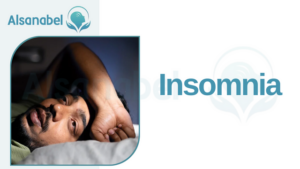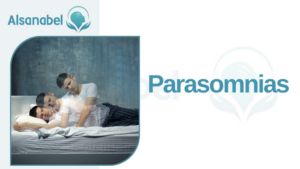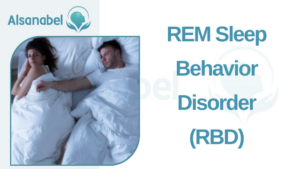The Different Types of Sleep Disorders 2023
- Category ADHD
Table of Contents
ToggleWhat are sleep disorders?
Sleep disorders are conditions that disrupt normal sleep patterns and can prevent individuals from getting the restful sleep they need. There are over 80 different types of sleep disorders identified by medical professionals. Some of the most common types include:
- Insomnia: Individuals with insomnia have difficulty falling asleep or staying asleep most nights for at least three months. This can lead to feeling tired, irritable, and having trouble concentrating during the day.
- Obstructive Sleep Apnea: This sleep disorder is characterized by snoring and moments during sleep when breathing stops. These interruptions in breathing can disrupt sleep and lead to daytime sleepiness and fatigue.
- Narcolepsy: Narcolepsy is a neurological sleep disorder that causes excessive daytime sleepiness and sudden uncontrollable episodes of sleep. People with narcolepsy often experience sudden loss of muscle tone (cataplexy), hallucinations, and sleep paralysis.
- Restless Legs Syndrome: Restless legs syndrome is characterized by uncomfortable sensations in the legs, leading to an irresistible urge to move them. This can make it difficult to fall asleep or stay asleep.
Causes and impact of sleep disorders
Sleep disorder can have various causes, including genetic factors, underlying medical conditions, lifestyle habits, and mental health issues. The impact of sleep disorders can be significant, affecting both physical and mental health. Sleep deprivation can lead to increased risk of chronic conditions like obesity, diabetes, heart disease, and mental health disorders such as depression and anxiety.
It is important to seek medical attention if you suspect you are experiencing a sleep disorder. Treatment options vary depending on the type and severity of the disorder but may include medication, lifestyle changes, and behavioral therapy. With proper diagnosis and treatment, individuals with sleep disorders can achieve better sleep and improve their overall well-being.
Insomnia
Insomnia is one of the most common types of sleep disorders. It is characterized by difficulty falling asleep or staying asleep, leading to inadequate rest during the night. This can have a significant impact on an individual’s daily functioning and overall well-being. Insomnia can be acute, lasting for a short period, or chronic, persisting for at least three months.

Types and symptoms of insomnia
There are two types of insomnia: primary insomnia and secondary insomnia.
- Primary insomnia refers to sleep problems that are not related to any other underlying health conditions. It can be caused by factors such as stress, anxiety, or poor sleep habits.
- Secondary insomnia, on the other hand, is associated with underlying health conditions like depression, chronic pain, or substance abuse.
Insomnia can have a significant impact on a person’s quality of life. The lack of restful sleep can result in impaired cognitive function, reduced productivity, and increased risk of accidents. It can also contribute to the development of other health issues such as mood disorders and chronic pain conditions.
It is essential for individuals experiencing symptoms of insomnia to seek medical attention. A healthcare professional can conduct a thorough evaluation to determine the underlying cause of the insomnia and develop an appropriate treatment plan. Treatment options for insomnia may include medication, cognitive-behavioral therapy, relaxation techniques, and lifestyle changes.
In conclusion, insomnia is a common sleep disorder characterized by difficulty falling asleep or staying asleep. Understanding the different types and symptoms of insomnia is crucial for proper diagnosis and effective treatment. By seeking professional help and implementing appropriate interventions, individuals with insomnia can improve their sleep quality and overall well-being.
Sleep Apnea
Sleep apnea is a type of sleep-related breathing disorder, characterized by abnormal breathing patterns during sleep. It is a common condition that affects millions of people worldwide. Sleep apnea occurs when an individual’s breathing stops and restarts multiple times throughout the night. These interruptions in breathing can lead to fragmented and inadequate sleep, resulting in various health complications.
There are two main types of sleep apnea: obstructive sleep apnea (OSA) and central sleep apnea (CSA).
Obstructive Sleep Apnea vs. Central Sleep Apnea
Obstructive sleep apnea is often associated with factors such as excess weight, obesity, and anatomic abnormalities in the airway. It is commonly observed in individuals with a larger neck circumference, narrowed airway, or a family history of the condition.
On the other hand, central sleep apnea is typically associated with underlying medical conditions, such as heart failure, stroke, or brain stem conditions. It can also be a side effect of certain medications or high-altitude environments. Unlike obstructive sleep apnea, central sleep apnea is not typically accompanied by loud snoring or gasping sounds. Instead, individuals may experience episodes of shallow or paused breathing, followed by a brief awakening.
Parasomnias
Parasomnias are a group of sleep disorders characterized by abnormal behaviors, movements, or experiences during sleep. These disorders can affect individuals across different age groups, although they are more commonly observed in children. While each parasomnia involves distinct symptoms, they can generally be categorized into three groups: NREM-related, REM-related, and other.

Sleepwalking and night terrors
Two common types of parasomnias are sleepwalking and night terrors.
- Sleepwalking, also known as somnambulism, is characterized by performing complex movements or activities while asleep. These activities can range from simple behaviors like sitting up or walking around in a dazed state to more complex actions such as cooking or driving a car. Sleepwalkers are typically unaware of their actions and may have no recollection of the event upon waking.
- Night terrors, on the other hand, are intense episodes of fear or terror that occur during sleep. Unlike nightmares, which are vivid dreams that can be recalled upon awakening, night terrors often leave individuals unable to remember the details of their experience. During a night terror, a person may scream, thrash, or show signs of extreme distress. These episodes usually last for a few minutes and can be disruptive to both the individual experiencing them and their sleep partner.
Both sleepwalking and night terrors are more common in children, with a reported prevalence of up to 15% in this population. The exact causes of these parasomnias are not fully understood, but they are believed to be influenced by a combination of genetic, environmental, and psychological factors.
While parasomnias can be distressing for both the individuals experiencing them and their loved ones, there are treatments available to help manage these sleep disorders. Talk therapies, such as cognitive-behavioral therapy for sleep disorders, can be effective in addressing underlying psychological factors contributing to parasomnias. In some cases, medications may also be prescribed to help reduce the occurrence and severity of these episodes.
If you or someone you know is experiencing sleepwalking, night terrors, or any other type of parasomnia, it is important to consult a healthcare professional for a proper diagnosis and treatment plan. With the right interventions, individuals can improve their sleep quality and overall well-being.
Narcolepsy
Narcolepsy is a sleep disorder that affects the control of sleep-wake cycles in individuals. It is a chronic condition that lasts for a lifetime, with no known cure. Most commonly, narcolepsy is divided into two types: type 1 narcolepsy with cataplexy and type 2 narcolepsy without cataplexy.
Type 1 narcolepsy is characterized by excessive daytime sleepiness and sudden muscle weakness or paralysis known as cataplexy. Cataplexy is triggered by intense emotions such as laughter, anger, or surprise, causing the affected individual to temporarily lose muscle tone and collapse. It can range from mild muscle weakness to complete loss of muscle control.
On the other hand, type 2 narcolepsy does not involve cataplexy. Individuals with type 2 narcolepsy experience excessive daytime sleepiness similar to type 1, but without the characteristic cataplexy episodes. They may also experience other symptoms such as sleep paralysis, hallucinations, and disrupted nighttime sleep.
Symptoms and Management of Narcolepsy
The most prominent symptom of narcolepsy is excessive daytime sleepiness, where individuals have an overwhelming urge to sleep during the day and struggle to stay awake. This can interfere with their daily activities, work, and social interactions. Other symptoms may include sudden loss of muscle tone, sleep paralysis, hallucinations, and fragmented nighttime sleep.
While there is no cure for narcolepsy, individuals can manage their symptoms with medications and lifestyle changes. Stimulant medications like modafinil and sodium oxybate can help improve wakefulness and reduce daytime sleepiness. Antidepressant medications such as selective serotonin reuptake inhibitors (SSRIs) can also be prescribed to manage symptoms like cataplexy and sleep paralysis.
In addition to medication, lifestyle modifications can play a significant role in managing narcolepsy. Establishing a regular sleep schedule, practicing good sleep hygiene, and taking short scheduled naps during the day can help alleviate symptoms. Avoiding triggers such as excessive caffeine or alcohol intake, and maintaining a healthy diet and exercise routine can also contribute to symptom management.
Support from family, friends, employers, and teachers is crucial in helping individuals cope with narcolepsy. Understanding and providing accommodations for their unique needs can greatly improve their quality of life. Additionally, joining support groups or seeking therapy can provide emotional support and strategies for coping with the challenges posed by narcolepsy.
In conclusion, narcolepsy is a chronic sleep disorder that affects the sleep-wake cycles of individuals. Its main symptoms include excessive daytime sleepiness, cataplexy (in type 1 narcolepsy), sleep paralysis, and hallucinations. Although there is no cure, medications and lifestyle adjustments can help manage the symptoms of narcolepsy, allowing individuals to lead fulfilling lives with the support of their loved ones and healthcare professionals.
Circadian Rhythm Disorders
Circadian rhythm disorders are a group of sleep disorders that all share the common feature of a disruption in the timing of sleep. “Circadian” in Latin means around or approximately a day, referring to the body’s 24-hour internal clock. Our bodies naturally follow a rhythm that regulates our sleep-wake cycle, hormone production, body temperature, and other processes. When this rhythm is disrupted, it can lead to various sleep and health problems.
One common circadian rhythm disorder is shift work sleep disorder. This occurs when individuals work non-traditional hours, such as overnight or rotating shifts, that conflict with their natural sleep patterns. The mismatch between their internal circadian rhythm and their work schedule often results in excessive sleepiness during work hours and difficulty sleeping during their designated sleep time.
Another type of circadian rhythm disorder is jet lag. This occurs when individuals travel across multiple time zones, disrupting their internal clock. Symptoms of jet lag include difficulty falling asleep or staying asleep at the appropriate local time, daytime fatigue, irritability, and problems with concentration and memory.
Shift work sleep disorder and jet lag
Shift work sleep disorder and jet lag can both have significant impacts on an individual’s overall well-being and quality of life. In addition to excessive sleepiness, these disorders can lead to mood disturbances, impaired cognitive function, decreased productivity, and an increased risk of accidents or errors.
Fortunately, there are treatment options available for both shift work sleep disorder and jet lag. For shift work sleep disorder, strategies such as optimizing sleep environment, using bright light therapy, and strategically timed napping can help manage symptoms. In some cases, medications may also be prescribed to promote wakefulness during work hours or aid in sleep during designated sleep time.
To manage jet lag, individuals can try adjusting their sleep schedule prior to travel, staying hydrated, avoiding excessive caffeine or alcohol consumption, and exposing themselves to natural light during the day at their destination. Melatonin supplements may also be used to help reset the internal clock and improve sleep quality.
REM Sleep Behavior Disorder (RBD)
REM Sleep Behavior Disorder (RBD) is a specific type of parasomnia that occurs during the rapid eye movement (REM) stage of sleep. Unlike normal REM sleep, where the body remains essentially paralyzed, individuals with RBD experience a loss of muscle atonia, causing them to act out their dreams physically.

These dream enacting behaviors can range from mild movements to more intense actions such as kicking, punching, or even jumping out of bed. RBD is often accompanied by vivid and often frightening dreams, which can be distressing for both the person experiencing it and their sleep partner.
RBD primarily affects older individuals, with symptoms typically emerging after the age of 50. It is more common in men than women, although the reasons for this gender difference are not yet fully understood. RBD can also occur as a result of certain neurological conditions such as Parkinson’s disease, multiple system atrophy, or Lewy body dementia. It is essential to differentiate RBD from other similar sleep disorders, such as sleepwalking or night terrors, as the treatment approaches can vary.
Causes and treatment of RBD
The exact cause of RBD is still not entirely understood, but research suggests that it is related to dysfunction in the brainstem structures responsible for regulating muscle activity during REM sleep. In some cases, RBD may be associated with underlying neurological conditions, as mentioned earlier. However, there are also idiopathic cases where no specific cause can be identified.
Treatment for RBD aims to control or reduce the disruptive and potentially harmful dream enactment behaviors. The first-line treatment typically involves medications that suppress or regulate REM sleep, such as clonazepam or melatonin. These medications help to prevent the motor activity associated with RBD and improve sleep quality.
In addition to medication, implementing safety precautions is crucial for individuals with RBD. This may include removing sharp or dangerous objects from the sleep environment and ensuring that the bed or sleeping area is free from obstacles that can cause injury during episodes of dream enactment.
It is important for individuals with RBD to consult with a healthcare professional for an accurate diagnosis and appropriate treatment plan. Managing RBD effectively can significantly improve sleep quality, reduce the risk of injury, and enhance overall well-being for those affected by this sleep disorder.
Seeking Professional Help
If sleep problems are interfering with your life, seeking professional help is essential. Many people toss and turn struggling with sleep problems they may not even be aware of. Professional assistance, such as the services offered at BrainHub, can provide the expertise necessary to identify and address the type of sleep disorder you may be experiencing. With their comprehensive approach and specialized equipment, they can diagnose and formulate a tailored treatment plan to improve your sleep quality and overall well-being.
Tips for Improving Sleep Hygiene
Alongside seeking professional help, there are also steps you can take to improve your sleep hygiene and enhance your chances of having restful nights. Here are a few tips:
- Maintain a Consistent Sleep Schedule: Go to bed and wake up at the same time every day, even on weekends.
- Create a Relaxing Bedtime Routine: Engage in relaxing activities before bed, such as reading a book or taking a warm bath, to signal to your body that it’s time to wind down.
- Make Your Bedroom Sleep-Friendly: Ensure that your sleep environment is dark, cool, and quiet. Use blackout curtains, earplugs, or a white noise machine if necessary.
- Limit Exposure to Electronic Devices: Avoid using electronic devices, such as smartphones or laptops, in the hour before bed. The blue light emitted by these devices can interfere with your sleep.
- Avoid Stimulants and Heavy Meals: Limit or avoid consuming caffeine, nicotine, and large meals close to bedtime, as they can disrupt your sleep.









